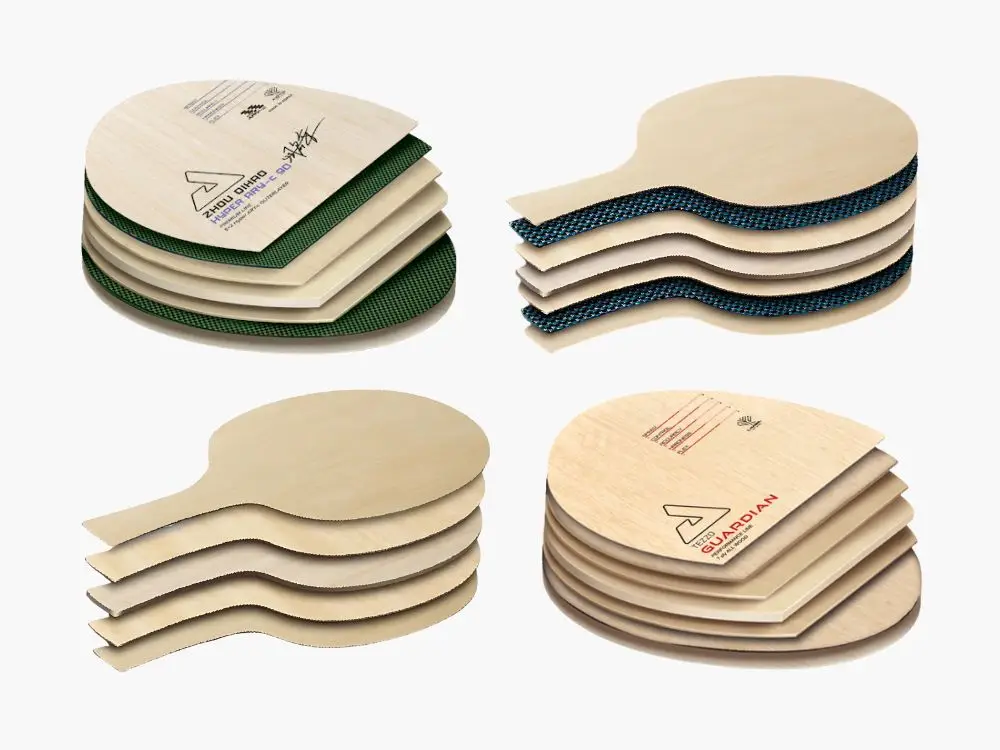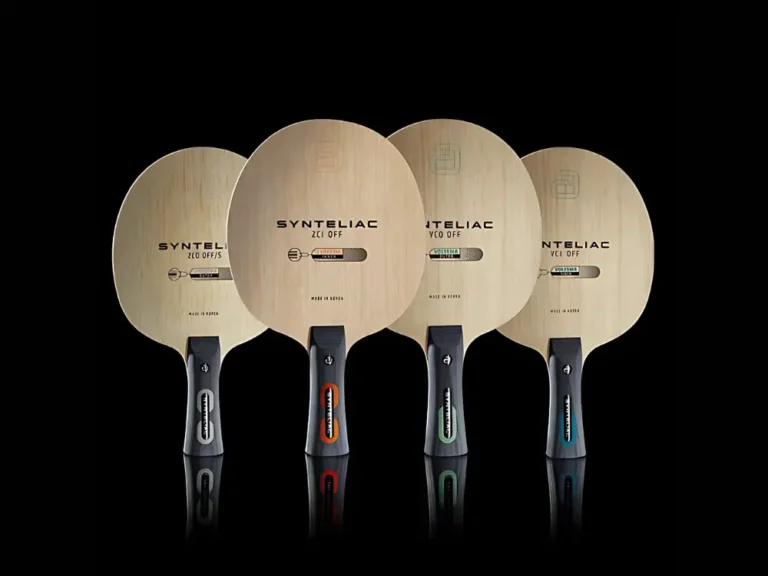In table tennis, your blade is the foundation of your setup. Its composition significantly influences how the ball behaves, from the spin you generate to the control and speed you experience. A blade’s build affects vibration, dwell time, weight, and ultimately, your confidence in every stroke.
A key element in blade construction is the number and type of layers, commonly referred to as “plies.” These plies are typically made from wood or a combination of wood and synthetic materials like carbon. Most blades fall into three main categories: 5-ply (wood), 7-ply (wood), and carbon-composite blades.
This guide explores how these different constructions affect performance, helping you choose the right blade based on your playing style and skill level. We’ll also touch on less common variants like 3-ply or ultra-stiff 9-ply blades.
“We may earn a small commission through affiliate links in this article at no extra cost to you. These earnings help support the content on our site and allow us to provide more detailed resources and reviews for table tennis players like you.”
1. What Is “Ply” in Table Tennis Blades?
A “ply” refers to an individual layer in a blade. These layers can be pure wood or synthetic fibers (e.g., carbon, arylate) sandwiched between wooden plies. The total number of layers determines the blade’s ply count.
- 5-ply: Common for balanced or flexible all-wood blades
- 7-ply: Adds stiffness and weight for more direct play
- 3-ply: Rare, mainly for traditional Japanese penhold blades or defensive blades
- 9+ ply: Often used for maximum rigidity or specialty styles
In general:
- Fewer plies = more flexibility, better feel
- More plies = increased stiffness, power, and stability
Imagine a sandwich of alternating light and dark wood sheets (or fiber layers); a cross-section diagram would clearly illustrate the ply structure.
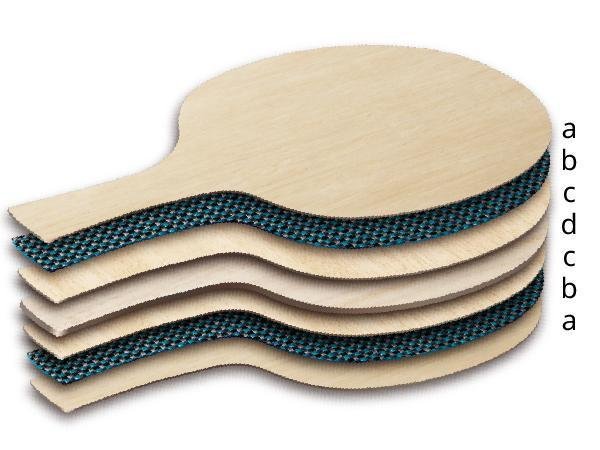
2. 5-Ply Blades: Feel, Flex, and Control
5-ply blades typically consist of three inner layers (core) and two outer layers. These all-wood constructions emphasize feel and control.
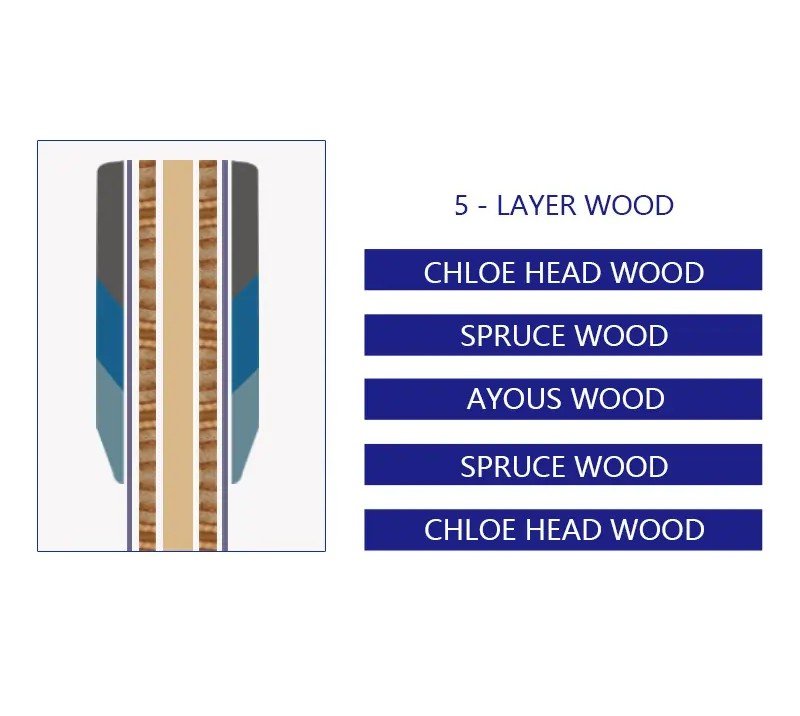
Key Characteristics:
- Softer touch with more vibration feedback
- Longer dwell time = better brushing for spin
- Excellent for controlled looping and placement
- Slightly lighter in weight
Popular Examples: Yasaka Sweden Extra, Stiga Infinity VPS V, Nittaku Acoustic.
Use Case Insight: “In close-to-table rallies, 5-ply blades offer great ball feel and allow easy adjustment for placement and spin.”
3. 7-Ply Blades: Stability, Directness, and Power
7-ply blades add extra wooden layers inside the blade’s core, increasing overall stiffness and weight.
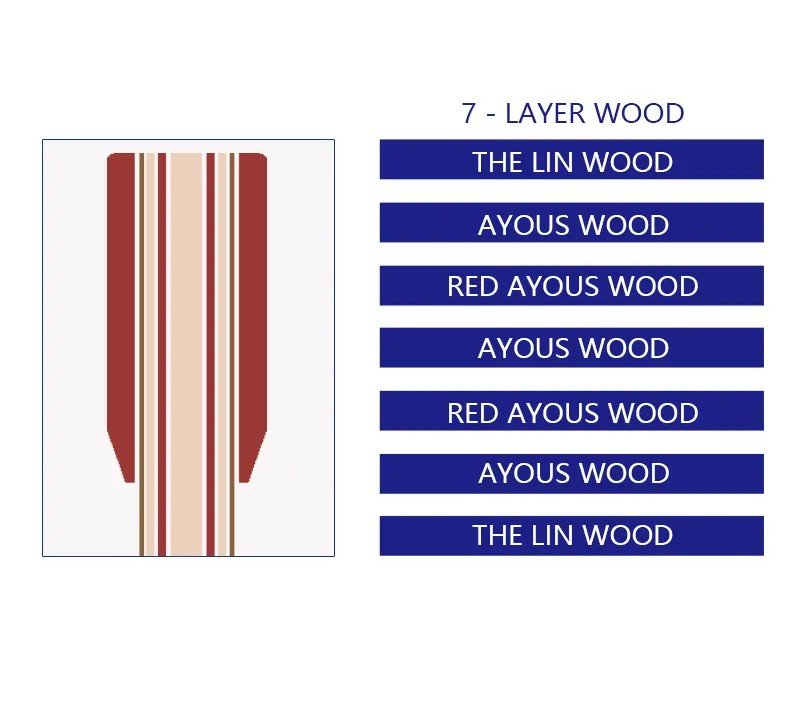
Key Characteristics:
- Reduced vibration = crisper, faster contact
- More direct energy transfer on impact
- Suited for blocking, hitting, and counter-loops
- Heavier feels offer added stability
Popular Examples: Stiga Clipper Wood, Yasaka Ma Lin Extra Special, Tibhar Samsonov Force Pro Black Edition.
Use Case Insight: “When smashing or countering topspin, 7-ply blades give a crisp, fast response and help maintain pressure.”
4. Carbon Blades: Power, Precision, and Sweet Spot
Carbon blades integrate synthetic fiber layers like carbon, arylate, or zylon with wood to create faster and more stable options.
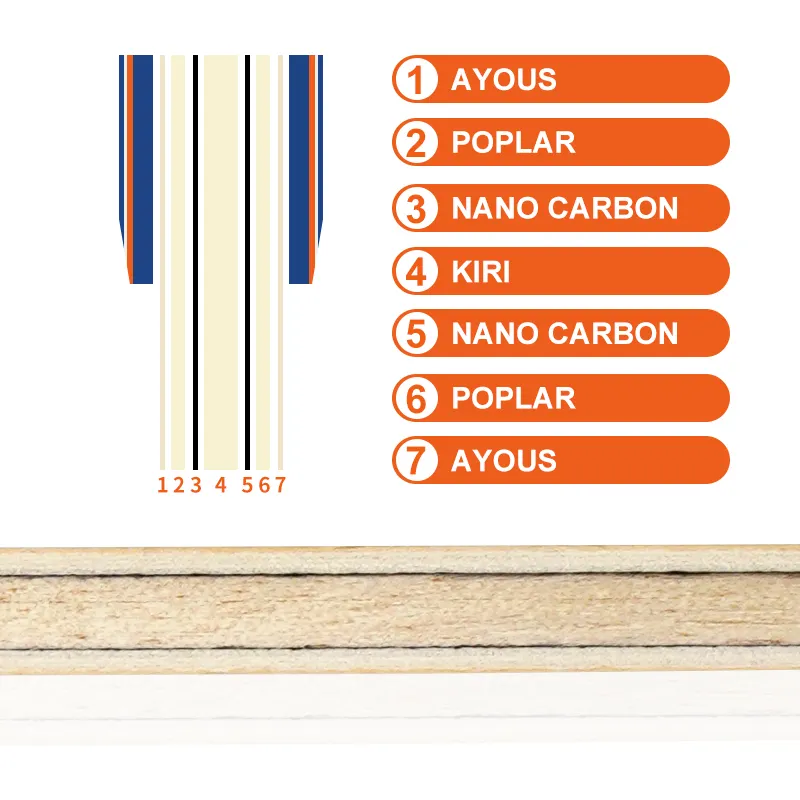
Key Characteristics:
- Increased speed and rebound
- Enlarged sweet spot
- Lower vibration for consistent feedback
- Ideal for aggressive or mid-distance players
As carbon blades evolved, manufacturers began refining not only the materials used but also the positioning of these materials within the blade. This led to a split between inner and outer carbon designs, each serving distinct player preferences.
➔ Outer vs Inner Carbon
Outer Carbon:
- Carbon layer is placed just under the outer wood ply
- Delivers a harder, faster feel
- Suited for high-speed attackers
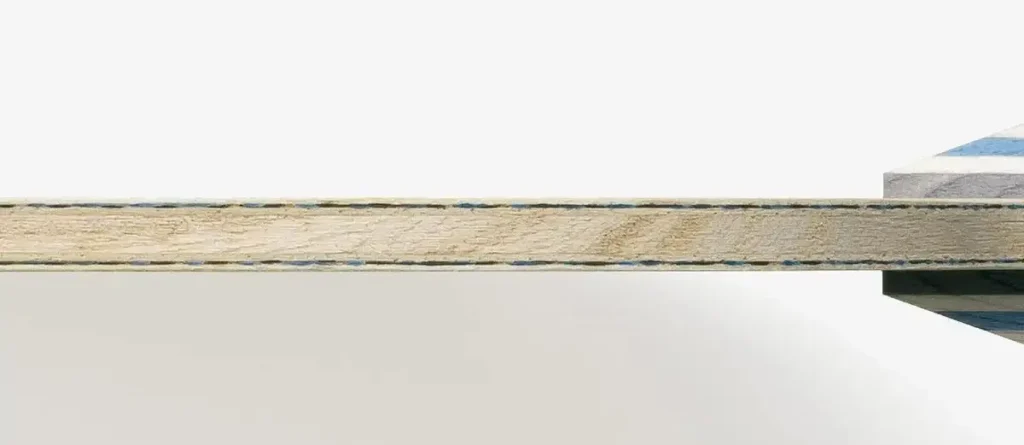
Examples: Butterfly Viscaria, Andro Treiber CO, Andro Synteliac VCO
Inner Carbon:
- Carbon is placed closer to the blade’s core
- Provides more dwell time and softer feedback
- Ideal for loopers who need control and spin
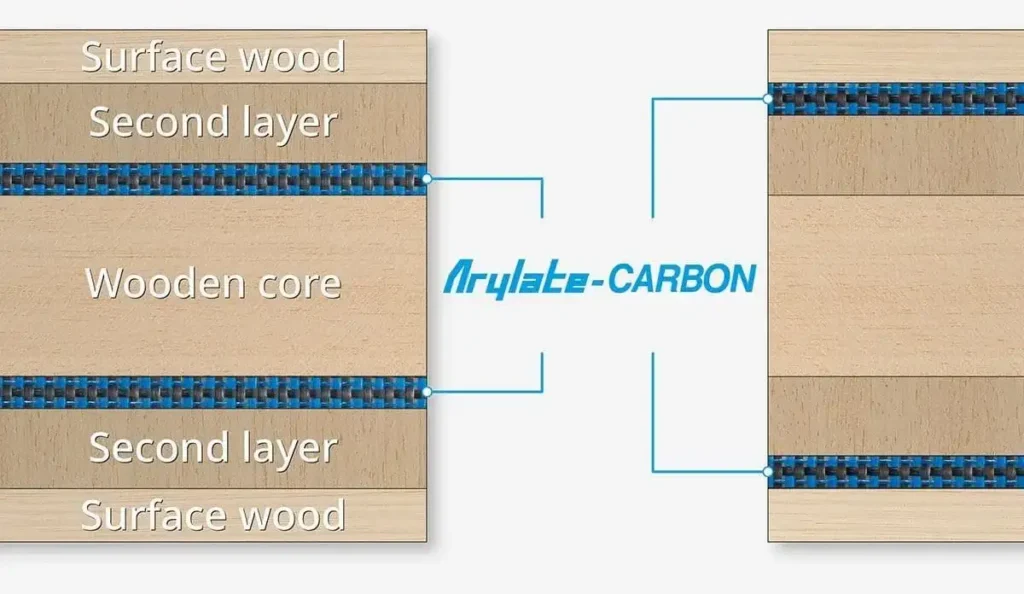
Examples: Butterfly Innerforce ALC, Andro Synteliac VCI, Andro Treiber CI
Whether you prefer the immediate explosiveness of outer carbon or the balanced control of inner carbon, your choice can greatly impact your timing, feel, and consistency in rallies.
➔ Common Carbon Types (Brief Overview)
- Arylate Carbon (ALC) – Balanced feel with spin-friendly control
- Zylon Carbon (ZLC) – Faster and stiffer than ALC; used for dynamic power play
- TAMCA 5000 – High speed, low dwell; pure carbon feel
- Kevlar/Aramid – Softer synthetic, enhanced ball feel
- Brand-specific Composites: JOOLA PBO-c, Andro Treiber, Andro Synteliac, Stiga Carbonado: Each tuned for unique response profiles
Note: Feel is also influenced by ply placement, core thickness, and the type of outer wood.
These material differences aren’t just technical; they change how each stroke feels, how much margin for error you have, and how your blade performs under match pressure.
5. Side-by-Side Blade Composition Comparison Table
To make the distinctions clearer, here’s a direct comparison of how 5-ply, 7-ply, and carbon blades differ across performance characteristics. This can help you quickly identify which blade type aligns with your playing goals.
| Feature | 5-Ply (Wood) | 7-Ply (Wood) | Carbon (Inner/Outer) |
|---|---|---|---|
| Flexibility | High | Medium | Low (Outer), Medium (Inner) |
| Speed | Moderate | Fast | Very Fast |
| Control | Excellent | Good | Varies by build |
| Dwell Time | Long | Medium | Short (Outer), Long (Inner) |
| Vibration Feel | High | Moderate | Low |
| Sweet Spot | Small–Medium | Medium | Large |
| Weight | Light–Medium | Medium–Heavy | Medium–Heavy |
| Ideal For | Loopers, All-round | Hitters, Blockers | Aggressive attackers |
Understanding these traits side by side allows you to evaluate trade-offs, such as sacrificing dwell time for a bigger sweet spot, and match blade characteristics to your individual needs.
6. Which Blade Type Should You Choose?
Choosing a blade can feel overwhelming with so many variables, but breaking it down by your playstyle, positioning, and experience level helps narrow the options. Use the breakdowns below to make a confident, informed choice.
By Playstyle:
- Loopers / Spin Attackers: 5-ply or Inner Carbon
- Flat Hitters / Blockers: 7-ply or Outer Carbon
- Counter-attackers: Carbon blades with high rebound
By Distance from Table:
- Close-to-table: 5-ply or inner carbon
- Mid-distance: 7-ply or outer carbon
- Far from the table: Fast outer carbon blades
By Experience Level:
- Beginner: 5-ply for control and feedback
- Intermediate: 7-ply or inner carbon for power/control balance
- Advanced: Carbon blades tuned for aggressive play
Blade selection isn’t just about specs, it’s about how it feels in your hand, how it responds under pressure, and how well it complements your training level. Test different types when possible and focus on the feel that supports your style.
Conclusion
Choosing the right blade starts with understanding its composition. The number of plies and the inclusion of synthetic materials like carbon directly affect how your blade feels and performs.
Whether you prefer the touch and control of 5-ply, the stability of 7-ply, or the explosive power of carbon blades, make sure your choice matches your technique, level, and goals.
Thank you for reading this guide! We hope it has helped clarify the complex world of blade construction and given you the confidence to choose a setup that fits your playing style.
Ready to take the next step? Explore our expert reviews of the best table tennis blades across all styles and budgets. We’ve tested and analyzed each option to help you make the most informed purchase possible.

